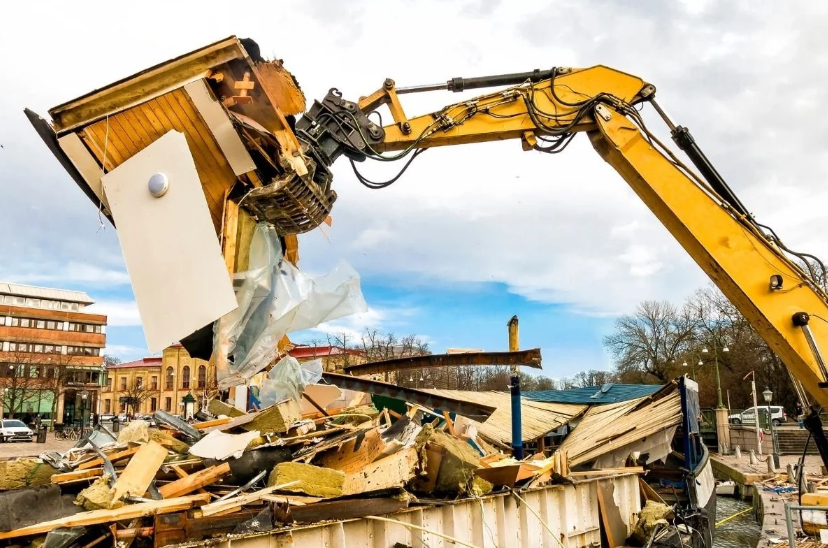
Before the Wrecking Ball: Essential Steps to Prepare for Demolition
Demolition might seem like a straightforward task—tear down a structure and make way for something new—but the reality is far more complex. Proper planning before demolition is critical for safety, efficiency, and minimizing environmental impact. Whether you’re demolishing a small home or a large commercial building, taking the right steps beforehand ensures a smooth, stress-free process. Here’s a comprehensive guide to help you prepare for demolition like a pro.
1. Conduct a Thorough Site Assessment
Before any demolition work begins, it’s essential to understand the structure you’re dealing with. A detailed site assessment includes evaluating the building’s age, materials, and structural condition. Identify hazardous materials like asbestos, lead paint, or mold, which require specialized handling. Understanding these factors helps you plan the demolition process, avoid unexpected delays, and comply with local safety regulations.
Additionally, take note of nearby structures, underground utilities, and any environmental features that might be affected. This assessment forms the foundation for your demolition plan.
2. Obtain Necessary Permits and Approvals
Demolition is heavily regulated, and skipping permits can lead to fines or legal complications. Check with your local municipality or building authority to understand the specific permits required for your project. These may include demolition permits, environmental clearances, and waste disposal approvals.
If the building has historical significance, additional approvals may be necessary before any work can begin. Starting the permitting process early ensures there are no delays once demolition day arrives.
3. Plan for Safety Measures
Demolition is inherently risky, so safety should be your top priority. Develop a safety plan that includes protective gear for workers, site fencing, and clear signage to keep bystanders away. Ensure all workers are trained in handling equipment and aware of potential hazards.
Additionally, plan for emergency situations. Have first-aid kits, fire extinguishers, and an evacuation plan in place. Investing in safety precautions upfront can prevent accidents and save lives.
4. Disconnect Utilities
Before demolition, all utilities must be safely disconnected. This includes electricity, gas, water, and sewer lines. Coordinating with utility providers ensures that the site is completely safe for workers. Leaving utilities active can result in accidents, fires, or explosions, so this step is non-negotiable.
Documenting the disconnection process is also useful for compliance purposes and can prevent liability issues later on.
5. Salvage and Waste Management
Demolition doesn’t have to be solely about destruction. Many materials—such as doors, windows, cabinetry, bricks, and metal—can be salvaged, recycled, or repurposed for future projects or resale. Identifying these reusable materials in advance not only reduces overall waste but can also help offset demolition costs.
Equally important is establishing a waste management compliance plan for materials that cannot be reused. Work with licensed recycling centers or certified waste disposal companies to ensure that all debris is handled, transported, and disposed of in accordance with local environmental regulations. This approach promotes sustainability, reduces environmental impact, and keeps your demolition project fully compliant with waste management laws.
See also: Why You Should Trust Your Business Events To Event Production Specialists
6. Create a Demolition Timeline
A clear timeline keeps the project on track and helps coordinate workers, equipment, and inspections. Break down the demolition process into phases, such as interior stripping, structural teardown, and debris removal. Factor in time for unexpected challenges, like weather delays or discovery of additional hazards.
Sharing the timeline with everyone involved ensures smooth communication and minimizes the risk of misunderstandings.
7. Hire Experienced Professionals
While some small-scale demolitions can be DIY projects, hiring experienced professionals is highly recommended for larger or more complex structures. Skilled demolition contractors bring the right equipment, expertise, and knowledge of safety regulations. They can also advise on the most efficient methods, saving both time and money.
8. Notify Neighbors and Community
Demolition can be noisy and disruptive. Inform nearby residents, businesses, and relevant community authorities about the project schedule. Clear communication fosters goodwill and minimizes complaints or conflicts during the demolition process.
Final Thoughts
Demolition is more than just swinging a wrecking ball—it’s a carefully coordinated effort that requires planning, safety measures, and attention to detail. By conducting a thorough site assessment, securing permits, prioritizing safety, managing utilities and waste, and hiring skilled professionals, you set the stage for a successful project. Preparing properly ensures that when the wrecking ball swings, the process is efficient, safe, and environmentally responsible. With these essential steps, you can confidently move forward, turning demolition into an opportunity for progress rather than chaos.



